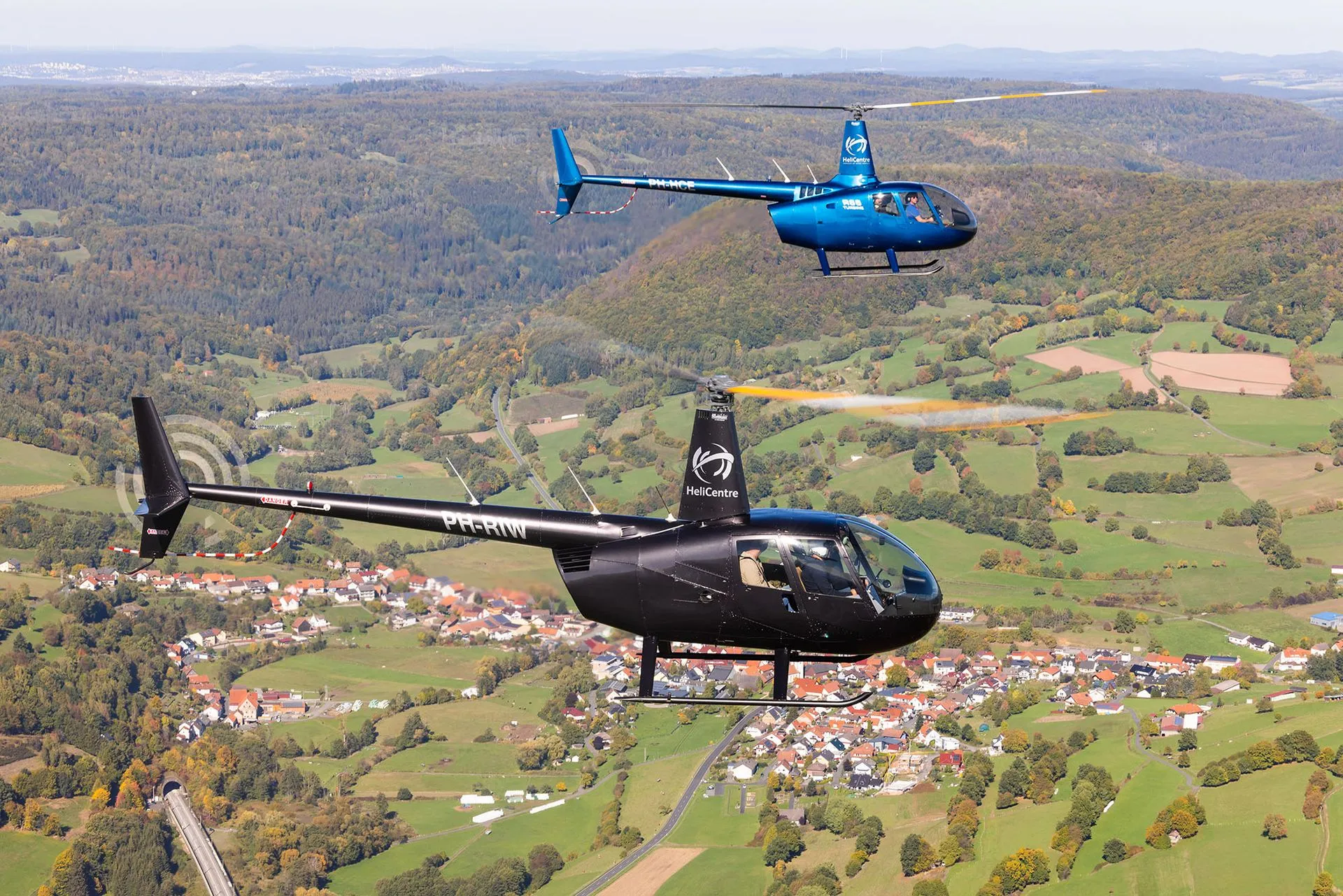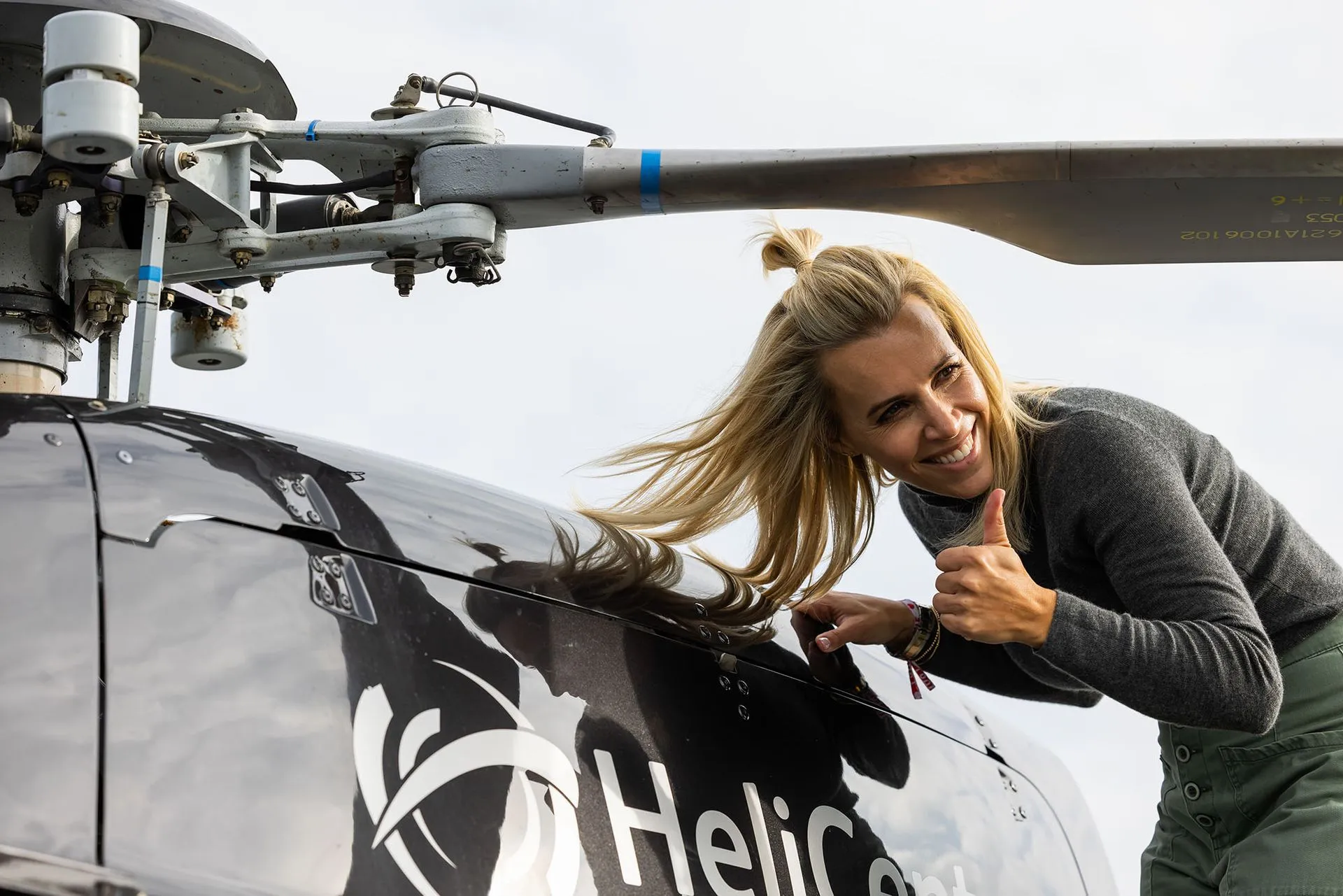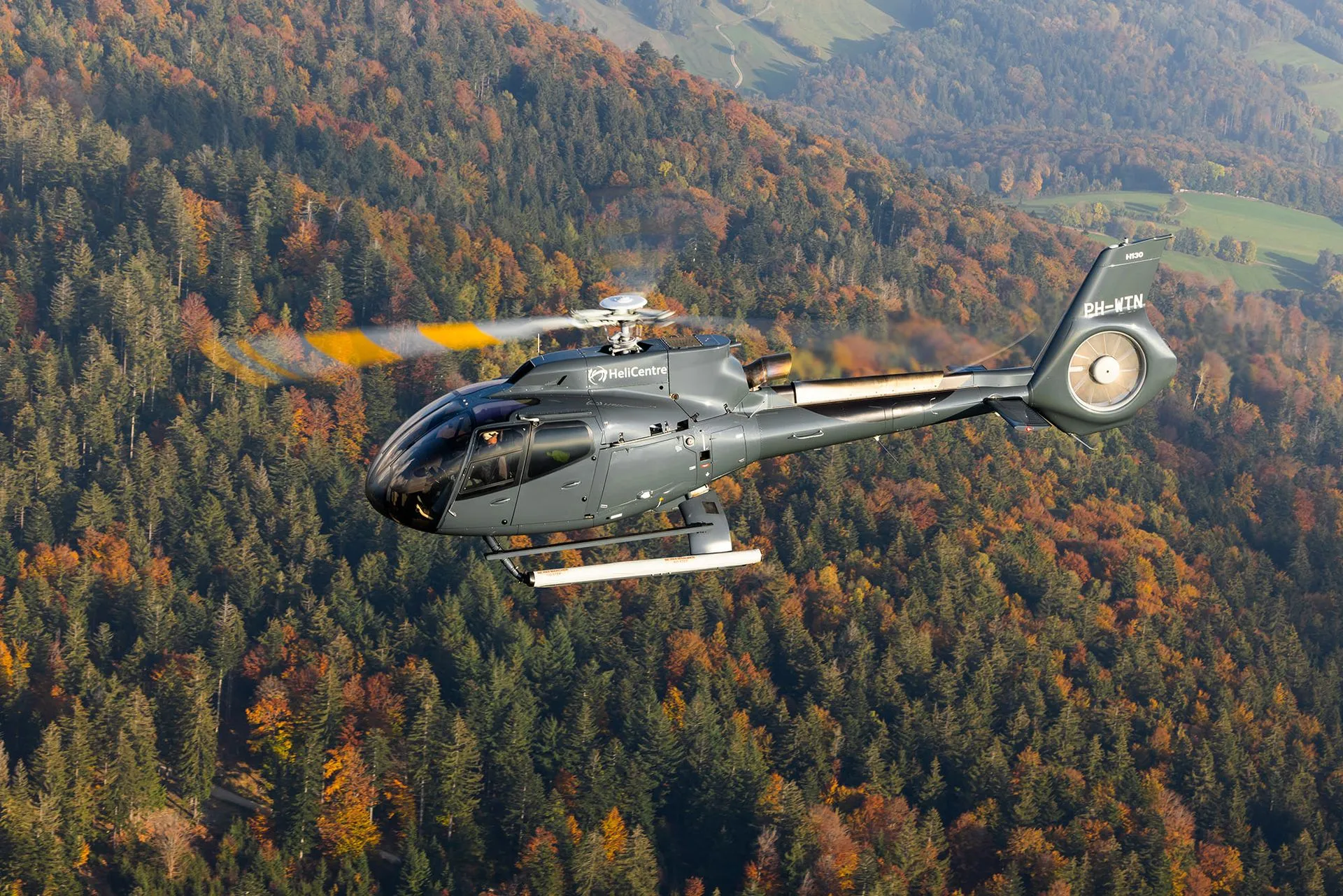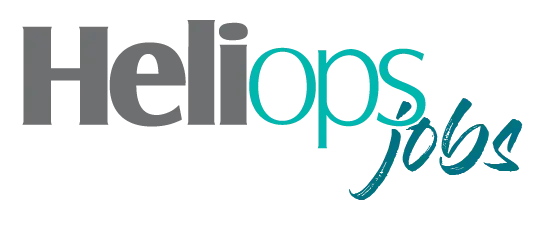Six years ago, an idea of HeliCentre pilots and instructors to conduct four-day trip to France has grown into a five-day trip through Europe. In 2022, 18 pilots and instructors took part in the ‘Heli Safar’i, organized by the HeliCentre company. HeliOps Team Member Jimmy van Drunen particpated and reports on this unique trip.
Organization
Located at Lelystad Airport, The Netherlands, HeliCentre has their own large helicopter fleet and annually transport several thousand passengers in the Netherlands and abroad. They also annually train a large group of helicopter pilots from beginner to the highest level (examiner). The company has focused since 2012 on training pilots to private or commercial standard and offers a wide range of training courses. The company organizes an annual trip through Europe where each flight visits a different destination, also known as: Heli Safari.
Floris van Dort and Jeroen Peddemors, owners of HeliCentre, organize the annual trip. Van Dort has also made all the preparations for this year's event. From booking hotels, taxis and restaurants to collecting all flight maps from the airports and approaching airports by calling them to come by with the large group of helicopters and number of participants. Participants also report to Van Dort if they are interested in participating in the trip, so that he can inventory what is needed for the trip.
Van Dort explained - ‘’The heli safari is designed to broaden the horizons for helicopter pilots. Not just the standard routes over the
Netherlands, but to make a educational trip across the borders with like-minded people.’

After obtaining their PPL (Private Pilot License), pilots can go on this trip against payment of a predetermined amount and can build up hours on the type of helicopter for which they have obtained their type rating. Or they can get acquainted with other types of helicopters in order to be able to progress to obtain a different type rating. The number of participating pilots and instructors varies per edition, this determines the number of participating helicopters. The participants are instructed a few weeks before about the route and can thus make the necessary preparations such as collecting the necessary flight data. Suchs as possible NOTAM’s, frequencies, calculating the load of cargo per flight and other special operations that may arise during the trip. The route of this edition relates to HeliCentre's collaboration with the European Leading Helicopter Academies (LHA) and during the trip, companies that are also members of this partnership were visited. The LHA is a European network of flight schools. The route was planned by everyone using the tool; SkyDemon, a published VFR flight planning and navigation software. It was accessible via the iPads available in each helicopter. The pilots must immerse themselves in the European regulations of EASA (European Union Aviation Safety Agency).
The departure took place from home base Lelystad Airport, the Netherlands, to fly to Germany for two refueling stops. At the end of day one we will spend the night in the Czech Republic. The second day the route will be continued towards Austria. The third day will also be a rest day. Day four will continue towards Switzerland. The fifth and last day will be flown from Switzerland to the Netherlands.
Flying through Europe is quite easy to plan. However, a number of things must be arranged well in advance. For example, you have to deal with a lot of frequencies, crossing country borders, military airfields on-route, No-Fly zones, NOTAM’s and many more special circumstances that must be carefully considered in advance. Because different types of helicopters fly with the formation and not all use the same type of fuel, Jet-fuel or AV-Gas, the airports that will be visited must be contacted in advance to see if they can handle the large number of helicopters on the day of arrival. This can be for a fuel stop with lunch at a small airport, or a stop for more than 24-hours at a large airport. Attention should also be paid to the different types of safety checks and the time that must be calculated in advance for this. At small airports you can often leave the field without security checks. At large airports such as Salzburg Airport, that is a different story. You cannot leave or enter the airport without a thorough security check and boarding pass. Because the group of participants is large, sufficient time must also be planned for this.

Heli Safari 2022
Sunday October 9th, 2022, and the day started early at Lelystad Airport, where the participating pilots and instructors gather for departure. The flights were performed VFR (Visual Flight Rules), so the weather is important for these flights. Everyone has prepared well for the flights. It is the first day of the five day Heli Safari.
The flight route was roughly the same for every participant. Airports had been notified of the arrival of the formation. Flight charts were downloaded, and frequencies known. Frequencies for air to air communication were also extremely important when flying through unfamiliar terrain with a large group of helicopters. After all, weather conditions can quickly change, especially in mountainous areas. Pilots can lose sight of each other or of a mountain. With mutual communication pilots can help each other and indicate where they are.
Participating helicopters of the company were, three Guimbal Cabri G.2s (one of which was hired from the company Air Technology Belgium, a company with which HeliCentre works closely with for outsourcing of maintenance), a Robinson R44, a Robinson R66, and an Airbus EC120. The seventh participant, an Airbus H130 was still under maintenance this day; it was to join the other helicopters later that day.
The Cabris took off first and the other helicopters followed shortly after. Because the difference in flight time between a Cabri and an EC120 is large, the three Cabris departed first. The first 'leg', was flown to Reichelsheim Airport in Germany. Because HeliCentre was part of the LHA since June 2022, the company asked a number of affiliated companies to organize a tour for the 18 participants of this trip. After this first stop, where the helicopters were refueled and the participants had lunch, the second leg was prepared to Hof-Plauen Airport, Germany. After a short refueling stop at this airport, the helicopters continued to their final destination for the day at Hradec Kralove Airport, Czech Republic. Here we were warmly welcomed by another affiliated company.
Late in the evening the Airbus H130 also arrived at the airport, bringing the total number of participating helicopters to seven. The Airbus H130 was equipped for IFR (Instrument Flight Rules), which allowed flying at night.
Crossing the border between European countries is easy. There are separate aviation rules for each country that must be adhered to, that are found on the flight charts or indicated by radio. The English language is not always (clearly) spoken on the radio.
After a first day of flying around 5.5 hours of flight time. In the early morning the departure was planned for the first stop in Austria. The clouds were high enough with sufficient visibility predicted for the route. The first stop of the day was Vöslau Airport. Austria is surrounded by mountains The high mountains can generate unpredictable winds and turbulence, provide for no forced landings, cause marked decline in takeoff and landing performance, and are difficult to navigate in poor visibility. All this can make flying interesting, especially for pilots with little mountain flying experience. After fueling the helicopters on the platform, the journey continued to the final destination of the day, Salzburg Airport.

PPL-Pilot at HeliCentre Willem Boiten who also flies as a captain on the Boeing 787 and Boeing 777 series at KLM Airlines and ex RNLAF helicopter pilot was one of the participants. Boiten said - "During the trip, the love for helicopter flying is very visible. We had an educational week in which we learned a lot from each other, cross country helicopter flying and making fun were central during this trip".
The third day was a rest day and spent with a visit to 'The Flying Bulls'. Red Bull is known for its energy drink, but in the world of aviation it is also known for Hangar 7. This is where Red Bull planes and helicopters are located, all in flying condition.
On day four, the weather turned. The clouds hung low between the mountains; it was rainy and visibility limited. Now it was up to the pilots to show that they could handle this kind of situation, which meant that the pilots had to change plans. A number of leaders put their heads together and arrived at a joint plan. The route had to be changed as the weather was too bad in the mountains near Switzerland to fly VFR, something that was necessary for a number of participating helicopters. As a result, no more visits could be made to affliaited companies in Switzerland. The SkyDemon tool was consulted, people were busy looking at the available options. Clarity followed at the end of the afternoon. The route will return back to the Czech Republic, to a different destination. Karlovy Vary Airport was now the destination. A flight of about 1.5 hours (2 hours in the Cabris).
Pilot and Flight Instructor at HeliCentre Tom Bornet was one of the participants from the company. Bornet said - "Like every edition, I have experienced the Heli Safari as a very fun and educational trip. Mountain flying in Austria was one of my personal highlights, which is very educational. It is also very nice to get to know people outside the Flight Academy, this happens by flying together, but also during breakfast and dinner, you are on the road together all day. In addition, it is also instructive for the pilots every time to experience a piece of 'decision making'. I can't remember a Heli Safari where all of us had to make choices regarding, for example, the weather. These are good learning moments".

The last day the weather forecast was good enough to fly back to the Netherlands. A refueling stop was scheduled at the airport of Kassel, Germany. Because this route was not known, the airport was called in advance to ensure they could receive seven helicopters for fueling. From Kassel airport it was about a 2.5 hour flight back to Lelystad Airport where the five-day journey started and ended.
During the route from Kassel Airport to Lelystad Airport, the weather changed rapidly. The clouds thickened and lowered. The helicopters had to descend to a low altitude to stay under the clouds. Visibility was limited and people had to be alert to obstacles. The weather conditions are what make flying challenging on trips like this. A tool like SkyDemon is an aid. Pilots passed positions to each other and indicated if there are obstacles such as high-voltage pylons. This was the part where communication was vital.
One by one, all seven helicopters reported to the Lelystad Airport frequency and landed on deck.
With this, the Heli Safari 2022 came to a successful end.
Conclusion
The sixth edition of the Heli Safari was again a great success. The experience that pilots gained grew enormously and hours were added to the logbooks. Flying through a part of Europe with a large group of helicopters and well-trained pilots makes the Heli Safari a truly unique event.
They are looking forward to organizing a new edition in 2023, with yet other destinations.
 HOME
HOME



